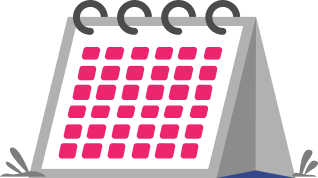Key Takeaways
- Product page optimization with high-quality images and compelling descriptions can increase conversion rates.
- Strategic pricing techniques like psychological pricing points and limited-time offers create purchase urgency.
- Streamlining the checkout process with guest checkout options and mobile optimization reduces cart abandonment.
- Email marketing campaigns targeting abandoned carts recover approximately 10–15% of otherwise lost sales.
- AmpCast AI transforms your topic into 8 content formats and distributes them to 300+ sites, boosting your e-commerce store’s online presence, ultimately increasing sales.
The Ecommerce Sales Crisis
Ecommerce competition has reached unprecedented levels in 2025, with over 28 million active online stores globally fighting for customer attention. But there’s good news, strategic approaches to increasing ecommerce sales still work remarkably well when implemented correctly.
The most successful ecommerce businesses aren’t relying on one-off tactics anymore. They’re implementing comprehensive strategies that address the entire customer journey from discovery to post-purchase engagement.
Let’s go into the five most effective strategies we’ve identified that are generating real results in today’s challenging ecommerce landscape.
How AmpiFire Works:
- Research & Target: Find high-demand topics your buyers search for
- Create & Repurpose: AmpiFire’s AmpCastAI generates news articles, blogs, videos, podcasts, infographics, slideshows, and social posts
- Distribute & Amplify: Auto-publish to 300+ sites including Google News, YouTube, Spotify, and major news networks
Get more traffic from people who want to buy your stuff, and powerful “As Seen On” trust badges for your site.
Do It Yourself (with AI), Done For You Content, & 100% Managed Organic Growth options available.
Grow Your Free Traffic From Everywhere
Strategy 1: Optimize Product Pages
Your product pages are where the magic happens, where browsers transform into buyers. When you optimize your product page you can increase conversion rates.
The key elements that contribute to high-converting product pages include high-quality images, compelling descriptions, and customer reviews calls-to-action. Let’s break down each component.
High-Quality Images
In ecommerce, your images do the heavy lifting that in-store experiences would normally provide. Shoppers often point to product images as the most influential factor in their purchasing decisions. Multiple high-resolution images showing products from different angles reduce uncertainty and build confidence.
Don’t stop at static images. Video demonstrations boost conversions even further by showing your product in action and addressing potential questions before they arise.
Compelling Descriptions
Your product descriptions need to do more than list features, they need to tell a story that connects with your customers’ needs and desires. We recommend using the Problem-Agitation-Solution framework to structure your descriptions.
First, identify the problem your customer is facing. Next, emphasize the pain points of that problem. Finally, present your product as the perfect solution.
Customer Reviews
Reviews function as powerful social proof that builds trust and reduces purchase anxiety.
Set up a systematic approach to gathering reviews by sending automated follow-up emails after purchase. Consider offering small incentives like discount codes on future purchases to encourage customers to leave detailed feedback.
Don’t hide negative reviews. Surprisingly, products with a few negative reviews among mostly positive ones convert better than those with only 5-star ratings. This is because some negative feedback actually increases authenticity and helps set realistic expectations.
Strategy 2: Price Optimization
The right pricing strategy can increase profits without necessarily lowering prices across the board. Leveraging competitive intelligence software can help you monitor competitors’ pricing, promotions, and product strategies to make more informed decisions. Smart pricing considers psychological triggers, perceived value, and strategic promotions that drive both conversions and average order value.
Psychological Pricing
The psychology behind pricing decisions is fascinating and powerful. Prices ending in 9 or 7 outperform rounded numbers by 15% in conversion tests. For example, pricing a product at $39 instead of $40 creates a perception of significantly better value, even though the difference is minimal.
For premium products, there’s anchor pricing; showing the original higher price alongside the current, lower price. This creates a reference point that makes your current price seem like an exceptional value.
Bundle Offers
Product bundling is one of the most effective strategies for increasing average order value. Consider tiered pricing for bundles to encourage larger purchases. For example, offering a 10% discount when buying two items, 15% for three items, and 20% for four or more.
This creates a compelling reason for customers to add more products to their cart, while still preserving margins on individual items.
Limited-Time Discounts
Scarcity and urgency remain powerful psychological triggers in ecommerce. Instead of perpetual “sales,” implement genuine limited-time promotions with clear deadlines.
Flash sales lasting 24–48 hours have proven particularly effective, especially when promoted through email and social channels to your existing audience.
Strategy 3: Simplify Checkout
The most successful ecommerce stores have minimal checkout steps. Every additional click, field, or decision point during checkout increases abandonment risk. Let’s look at the most impactful checkout optimizations.
One-Click Purchasing
One-click purchasing functionality has become an essential feature for high-converting ecommerce stores. The key is securely storing customer information while making it incredibly easy to complete repeat purchases.
For new customers who can’t use one-click purchasing yet, you can use progress indicators that clearly show how many steps remain in the checkout process. This transparency reduces abandonment by setting clear expectations about the time investment required to complete a purchase.
Multiple Payment Options
Payment preferences vary widely among consumers, and limited payment options directly impact conversion rates. The optimal payment mix includes traditional credit/debit cards, digital wallets like Apple Pay and Google Pay, and increasingly popular buy-now-pay-later options.
The key is prominently displaying these payment options early in the shopping experience, not just at checkout.
Mobile Optimization
Mobile commerce now accounts for over 70% of ecommerce traffic in 2025, yet mobile conversion rates still lag behind desktop. This gap is largely due to poor mobile checkout experiences.
The most successful ecommerce stores have implemented mobile-first checkout designs with thumb-friendly button placements, streamlined form fields that leverage device capabilities (like camera for credit card scanning), and payment options that integrate with mobile wallets.
Strategy 4: Email Marketing Mastery
The reason for email success in 2025 is sophisticated personalization and strategic automation that delivers the right message at the right moment in the customer journey.
Ecommerce businesses implementing comprehensive email strategies see 30+% of their total revenue coming from this channel alone. Some types of emails to send include:
Abandoned Cart Emails
The optimal approach for cart abandonment emails is a three-email sequence:
- A reminder sent 1 hour after abandonment.
- A second email highlighting benefits and addressing common objections after 24 hours.
- A final email with an incentive (like a limited-time 10% discount) after 48 hours.
Personalized Recommendations
Recommendation emails based on browsing and purchase history consistently outperform generic promotions in both open rates and conversion rates.
Many successful ecommerce businesses are using AI-powered recommendation engines that analyze multiple data points to suggest truly relevant products, rather than simply showing related categories.
Segmentation Tactics
The era of one-size-fits-all email blasts is long gone. You see conversion rates increase when emails are sent to highly specific segments based on behavior, purchase history, and engagement levels.
Effective segmentation strategies include targeting customers based on purchase frequency, average order value, category preferences, and engagement recency.
Strategy 5: Use Multiple Channels
Relying on a single marketing channel creates dangerous vulnerability to algorithm changes, policy shifts, or increased competition. The most successful ecommerce stores implement an integrated multi-channel approach that creates multiple touchpoints throughout the customer journey.
Social Commerce Integration
Social media platforms have evolved beyond advertising into direct selling channels. Instagram Shopping, Facebook Marketplace, and TikTok Shop allow customers to purchase without leaving the platform, reducing friction and improving conversion rates.
The key is treating each social platform as a unique sales channel with its own audience behavior patterns.
Content Marketing Synergy
Content marketing creates the foundation for all other channels to build upon. Blog posts, how-to guides, and educational content establish authority while providing material for social media, email campaigns, and paid advertising.
The most effective approach involves creating cornerstone content pieces that can be repurposed across multiple channels. A comprehensive product guide can become a blog post, email series, social media carousel, YouTube video, and podcast episode.
This maximizes content ROI while maintaining consistent messaging across touchpoints.
Paid Advertising Diversification
While Google Ads and Facebook Ads remain dominant, successful ecommerce stores are expanding into emerging platforms like YouTube Shorts, Pinterest Ads, and influencer partnerships. Each platform offers unique advantages: YouTube provides long-form demonstration opportunities, Pinterest captures high-intent shoppers, and influencer partnerships build authentic trust.
The optimal approach involves testing small budgets across multiple platforms before scaling successful campaigns. This diversification protects against sudden policy changes or increased competition on any single platform while maximizing reach across different audience segments.
Transform Your Ecommerce Growth with AmpCast
These five strategies provide a solid foundation for increasing ecommerce sales, but implementing them manually can overwhelm busy business owners. AmpiFire solves this challenge by using AI to automatically create and distribute content that drives organic traffic to your store.
AmpiFire’s AmpCast platform takes any topic about your ecommerce products and transforms it into 8 different content formats: news articles, blog posts, interview podcasts, videos, video shorts, infographics, slideshows, social posts.
These are then automatically distributed to over 300 high-authority sites including Google News, YouTube, Spotify, Pinterest, Tiktok, Instagram, Facebook and Fox affiliate sites. This comprehensive approach delivers exceptional ROI for your business.
Real Results: 417% Traffic Increase for a Furniture Ecom Store
Directbed.ca, a Canadian mattress retailer for unique bed sizes, had difficulty reaching customers and boosting sales. Using our automated multi-format content creation and distribution across tons of sites online, they built trust with customers, got their brand noticed more, and attracted quality leads that turned into real sales.
The results speak for themselves. Between August 2021 and December 2022, Directbed.ca experienced remarkable growth through 35 targeted amp campaigns.
- Their website traffic exploded from 1,470 to 7,609 visitors according to Ahrefs data
- Total keyword rankings more than doubled from 705 to 1,732.
- This 417.8% increase in traffic translated directly into significant sales growth
All these prove that strategic content creation and distribution through AmpCast can transform e-commerce businesses of any size.
When you create different types of content and spread it across tons of websites, you build up free organic traffic that keeps growing over time. This is especially helpful for new ecom stores since you’re not spending money on ads while your marketing system is still getting set up, and this free traffic helps you avoid budget losses early on.
Plus, when your ecom store or brand shows up everywhere people look – on videos, social media, and search results – it makes any paid ads you run work way better because people already recognize and trust you. This means you can rely less on expensive ads and keep more profit in your pocket.
Ready to get more eyes on your ecommerce store and watch your sales grow?
Frequently Asked Questions (FAQ)
How quickly can I see results from these strategies?
You’ll see the first measurable improvements within 7–14 days of implementing the initial optimizations, particularly from product page enhancements and abandoned cart emails.
More complex strategies like checkout optimization and multi-channel selling typically show significant results within 30–60 days.
The full impact of all five strategies working together generally manifests within 90 days, with continued improvement over subsequent quarters as you refine your approach based on performance data.
Which strategy works best for new ecommerce stores?
For brand new ecommerce stores, we typically recommend focusing first on product page optimization and building a foundation of social proof.
These elements are essential for converting your initial traffic, regardless of source. Without compelling product pages and visible trust signals, other strategies will deliver suboptimal results.
Do I need to implement all five strategies at once?
Definitely not. In fact, attempting to implement everything simultaneously typically leads to poor execution across the board. We recommend following the 90-day phased implementation timeline, which prioritizes strategies based on impact, resource requirements, and logical sequencing.
This approach ensures you’ll see continuous improvement throughout the implementation process while maintaining high-quality execution.
Can these strategies work for both B2B and B2C ecommerce?
Yes, these strategies are effective for both B2B and B2C ecommerce, though the specific implementation details differ. B2B implementations typically require more emphasis on detailed product information, account-based pricing, streamlined reordering processes, and integration with procurement systems.
For B2C ecommerce, we recommend adjusting the implementation timeline to prioritize checkout optimization earlier in the process, as B2B checkout complexity is often the primary conversion barrier.
Can AmpiFire’s content distribution strategy work alongside my existing ecommerce marketing efforts?
Absolutely! AmpiFire complements your current ecommerce marketing perfectly. While you continue running paid ads or other campaigns, AmpCast creates and distributes multi-format content across 300+ platforms including Google News, Instagram, Tiktok, YouTube, and Spotify.
This multi-channel approach builds organic traffic that keeps growing even when ad budgets are paused, improving your online presence, and driving sales to your e-commerce store.
Author
-
CEO and Co-Founder at AmpiFire. Book a call with the team by clicking the link below.
Related Posts

Effective Ecwid Email Marketing Strategies for Boosting eCommerce Businesses Sales
What are the best email strategies for boosting Ecwid sales? See our guide as we look at effective email marketing…

Top 10 Ecommerce Podcasts for Online Sales: Expert Insights, Trends & Strategies
Looking to improve your skills as an online trader? Check out our list of the top 10 eCommerce podcasts! From…

Black Friday 2025: Best Marketing & Sales Software and Course Deals
Check out the best Black Friday 2025 deals on marketing and sales SaaS and courses to save big while leveling…

2025 Recession Proof Niches & Industries for B2B Digital Marketing Agency Sales
Don't let a likely recession stop you from making money! Recession-proof your business with content marketing in these 25 lucrative…

Ecom Store CRO Checklist: Proven Techniques & Best Practices
Get more sales with our ecom store CRO checklist: find proven techniques for optimizing your website, product pages & omnichannel…

How to Boost Your eCommerce Brand Exposure: 7 Strategies for Building & Marketing a Successful Online Store [Examples]
When it comes to building a successful eCommerce brand, visibility is key. Whether you sell premium goods or are simply…










